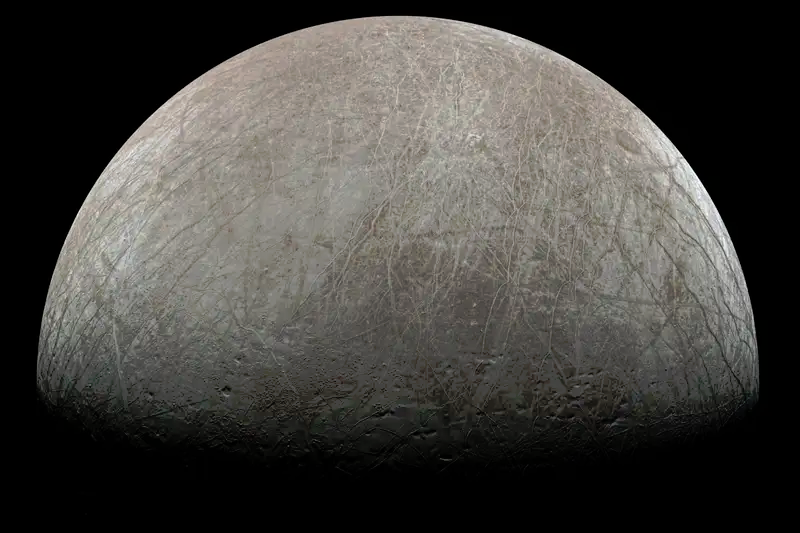We should be seeing the results in a day or so:
Scientists are gearing up to get the most detailed snapshot yet of Europa, one of the frozen water worlds in our Solar System potentially capable of hosting life.
NASA’s Juno probe, which was originally designed to study Jupiter, will zip over the planet’s icy moon tonight at around 7:36pm AEST.
Europa may harbour a salty ocean underneath its frozen crust that locks up more water than on Earth.
Coming within 358 kilometres of the moon’s red and white-striped surface, it will be the closest flyby of the tiny world in more than two decades.
“We’re really excited that we’re able to fly by Europa so close … it wasn’t in our original plan,” said Scott Bolton of the Southwest Research Institute and head of NASA’s Juno mission.
….Screaming past at about 24km per second, Juno will take a new route and cover an area not seen in high resolution by Galileo, and investigate what lies underneath the moon’s icy shell for the first time.
“Even though we only go by once, we go by with a very unique kind of instrumentation,” Dr Bolton said.
On this flight, Juno will start collecting data when it is about 83,000km from its target, about an hour before the flyover on Thursday night.
As it comes in over the planet’s night side, Juno’s navigation camera will take a black-and-white photo of the moon illuminated by light reflected off Jupiter.
“We did this with Ganymede and it worked great.”
Then it will cross over to the Europa’s day side and take a series of colour images with a resolution of around 1km per pixel using JunoCam.
The spacecraft will also peer deep into the moon’s icy shell for the first time using a tool known as a microwave radiometer.
This tool, which was designed to see through Jupiter’s swirling clouds, measures temperatures at a particular wavelength coming off an object.
“We certainly discovered a lot of things we didn’t anticipate with it,” Dr Bolton said.
On Europa it will be able to measure the thickness of the frozen crust and detect changes in reflectivity that may indicate fractures or pockets of water near the surface.
“If we did see , that would be a very important discovery because that may be the more likely place where liquid would make contact with the surface.”

